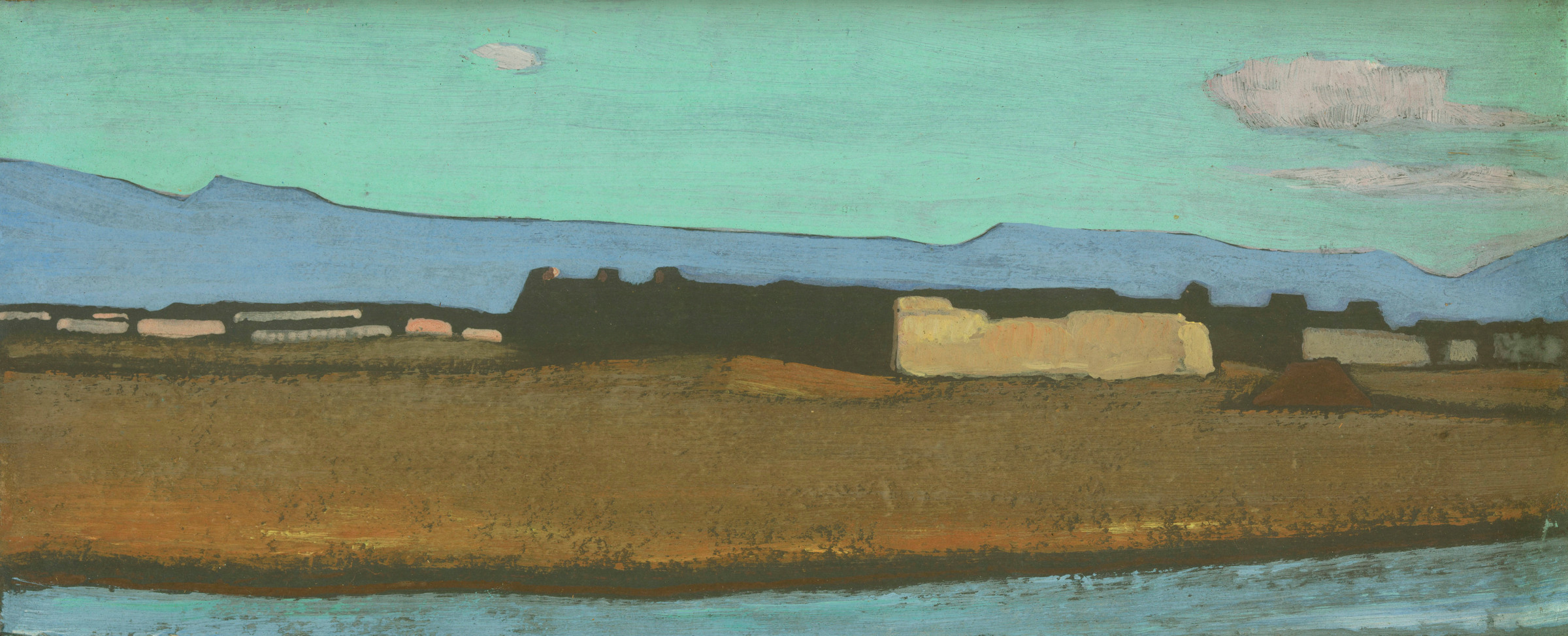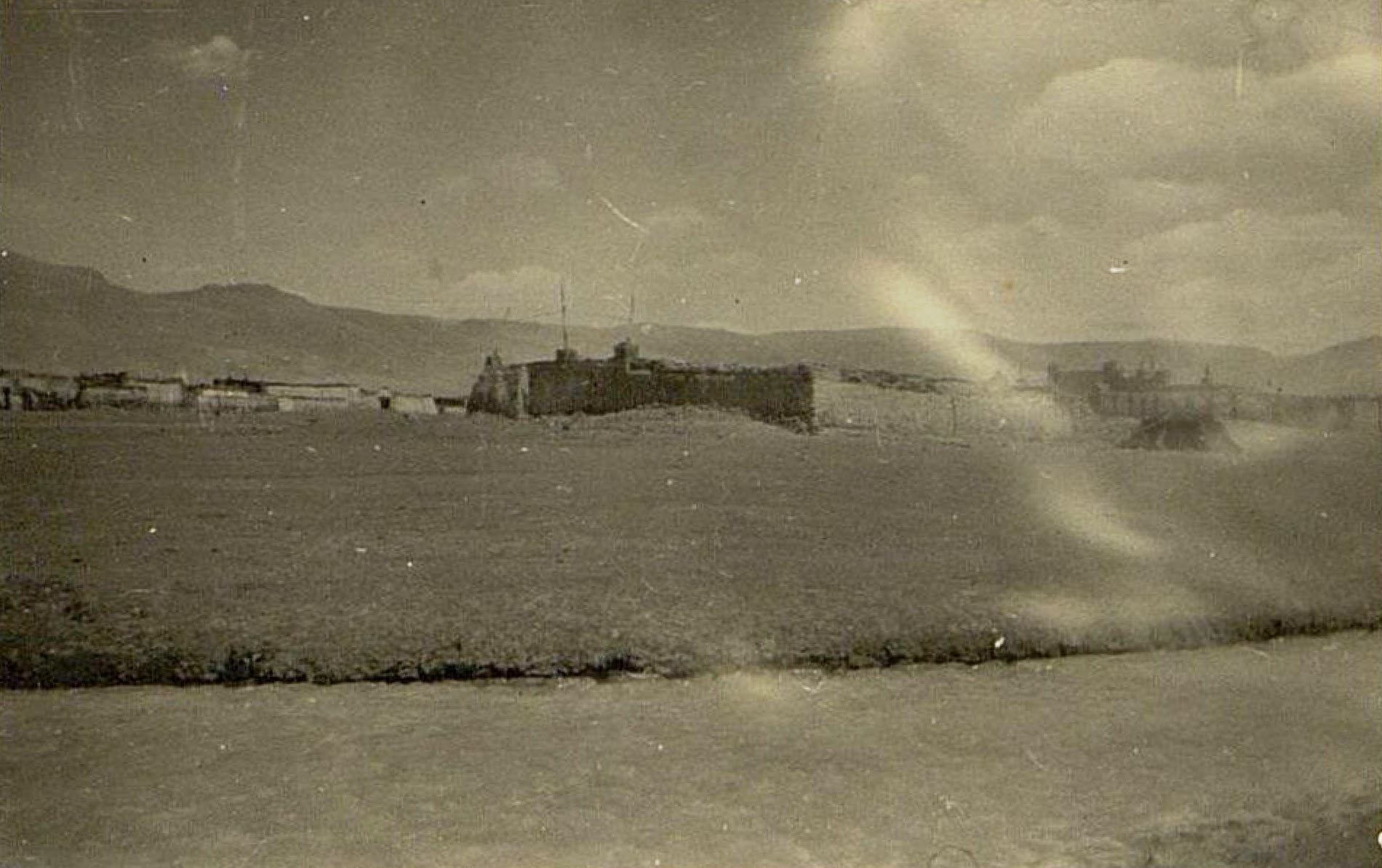ÉCOLE DE PARIS AND OTHER MASTERS
4 December 2024

* 3. ROERICH, NICHOLAS (1874-1947)
Shentsa Dzong in the Trans-Himalayas. 1928, numbered and dated by the artist on the reverse "N 66. / 1928."
Tempera on cardboard, 14.5 by 35 cm.
SOLD FOR 76,395 GBP
Provenance: Collection of the Roerich Museum, New York, 1929–1935.
Collection of Nettie and Louis Horch, New York, until 1957.
Collection of Dr. Carlos Giro, New York, until 2005.
Acquired from the above by the previous owner.
Private collection, USA.
Thence by descent.
Private collection, USA.
Exhibited: Roerich Museum (permanent collection), New York, 1929–1935.
Literature: Roerich Museum Catalogue, 8th ed., New York, Roerich Museum, 1930, p.35, no. 894.
During the expedition of 1923 – 1928, in their travel diaries – Altai–Himalaya and Trails to Inmost Asia – Nicholas Roerich and his elder son George recorded the day-to-day details of the expedition.
On March 28, 1928, the expedition reached Shentsa dzong. George wrote: “The vast plain on which the dzong was situated was clearly visible as far as the lake Chyaring tsho, on the northwest of the plain. <...> The countryside was free from snow, which lay only in ravines and on the northern slopes of the mountains. Before reaching the village of Shentsa, we crossed the frozen Shentsa chu, flowing in several narrow channels. <...> The village is a motley collection of some sixty half-ruined structures of sun-dried bricks with roofs covered with sod...” (Roerich, George. Trails to Inmost Asia. New Haven: Yale University Press, 1931, p. 421). The expedition photo of the place (ill. 1) allows us to conclude that Roerich executed the painting later that year in Darjeeling, where he rested after completing his five-year-long travels from June to December 1928.
Unlike the Castles of Gesar Khan, lots 1 and 2, Shentsa is a real place in the Trans-Himalayas. Yet, it looks surreal as the artist views the surrounding landscape through his spiritual vision. The unearthly quality of Roerich’s art draws us inside his world and makes us admire not just the striking palette but witness the enigmatic presence of the divine in this mundane, ordinary life.
We are grateful to Gvido Trepsa, Director of the Nicholas Roerich Museum, New York, for his assistance with cataloguing this work.
Illustration 1. The expedition photograph of Shentsa dzong, Trans-Himalayas.

Notes on symbols:
* Indicates 5% Import Duty Charge applies.
◎ Indicates the lot is located outside the UK. Successful bidders would collect their lots outside the UK after payment.
Ω Indicates 20% Import Duty Charge applies.
§ Indicates Artist's Resale Right applies.
† Indicates Standard VAT scheme applies, and the rate of 20% VAT will be charged on both hammer price and premium.